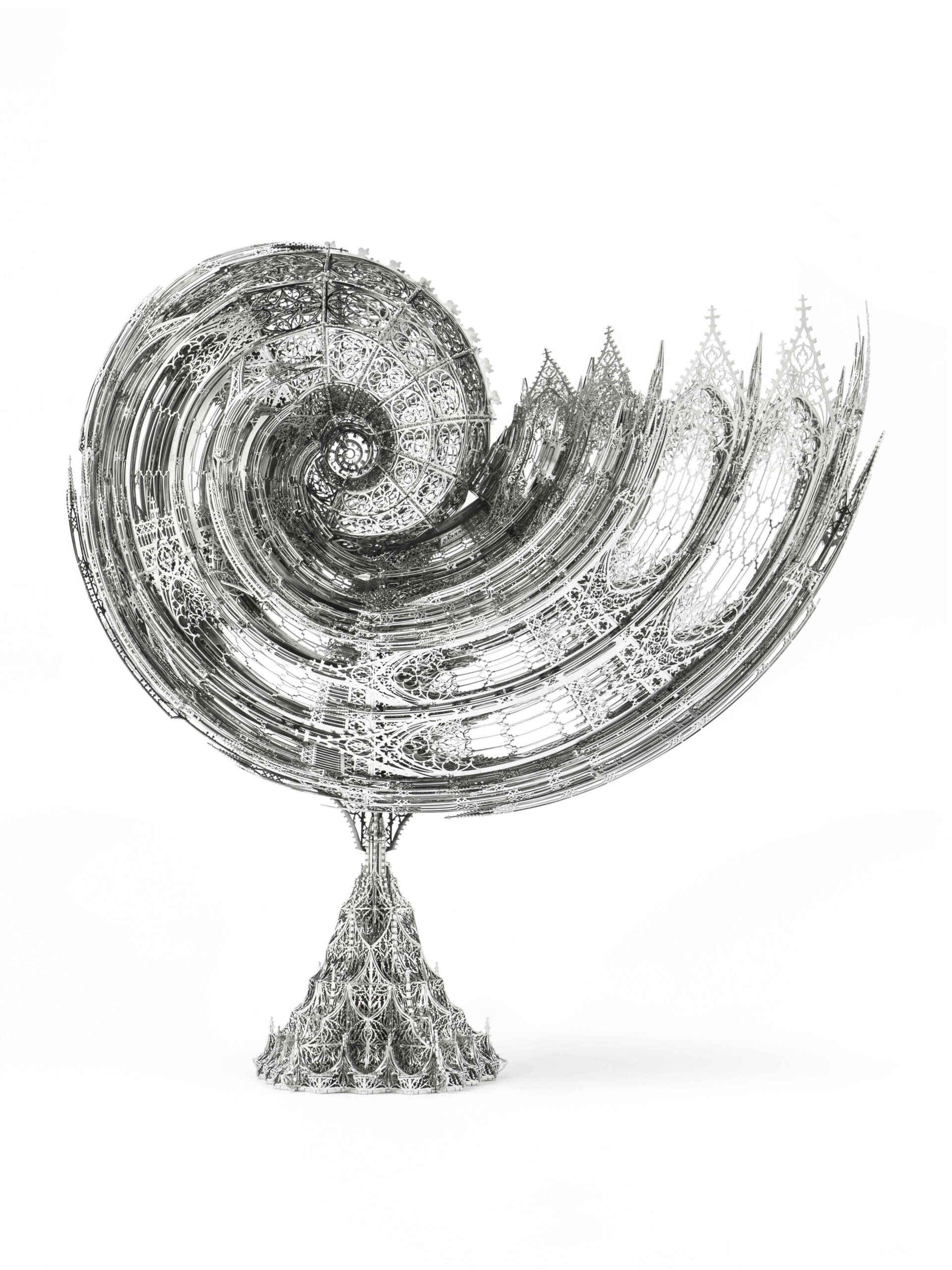A pioneer in the use of new technologies, Iris van Herpen transgresses conventional clothing norms, embracing both traditional Couture craftsmanship and innovative techniques. The exhibition interrogates the body understood as space, and rethinks its relationship to clothing and its surroundings. A selection of more than one hundred haute couture garments made by Iris van Herpen dialogues with artworks by artists close to the designer, as well as objects from the sphere of natural sciences, such as skeletons and fossils, thus infusing a unique resonance. Born in 1984, Iris van Herpen grew up in a small town in the Netherlands, in harmony with nature and the living world, which are, along with ballet, which she has practiced intensively since childhood, the founding elements of her relationship with the body and clothing. After a formative period with Alexander McQueen and Claudy Jongstra, she founded Maison Iris van Herpen in Amsterdam in 2007, combining the subtleties of craftsmanship with the pioneering spirit of innovation, decomposing and opening up her practice to a range of other disciplines, resulting in sensory design that captures the complexity and diversity of the natural world.

“For me fashion is an expression of art that is very closely related both to me and to my body. I see it as an expression of identity combined with desire, moods and a cultural setting.”
Iris van Herpen’s commitment to slow, thoughtful fashion allows for a reimagining of the normalized relationship with fashion to make it something more. The designer herself dreams of being able to deal, sooner or later, with non-material clothes, made from molecules alone. The retrospective curated by Cloé Pitiot, wanting to celebrate this unique aspect of the designer, is organized around nine themes, which find their conclusion in the most recent collection, entitled Carte Blanche, which dialogues with David Spriggs’ work Origins, literally inviting the visitor to immerse himself in the designer’s aquatic universe. A special space at the Musée des Arts Décoratifs reveals the natural environments invisible to the naked eye already unveiled in the 19th century in Ernst Haeckel’s illustrations and in the extraordinary glass models of Léopold and Rudolf Blaschka, which are contrasted by the ultra-lightweight paper works of Ren Ri and Tomáš Libertíny.

“I find beauty in the continual shaping of chaos which clearly embodies the primordial power of nature’s performance.”
It feels very much like shaping chaos and sculpting the senses when entering another room one has the opportunity to explore the theme of the skeleton from the Skeleton dress that echoes the work of Japanese artist Heishiro Ishino. The space occupied by the body is evoked by the organic and architectural networks that form a dress in the center of a room, a metaphor for a Gothic cathedral. Next, visitors are invited to step outside the physical dimension of their bodies to explore the sensory world through Tim Walker’s photographs and Matthew Harrison’s sculpture. Art, dance, physics, architecture, and chemistry are all forms that van Herpen uses for a questioning of notions of Haute Couture: his is a hybrid fashion that plays above all with a willingness to collaborate more and more with creatives and thinkers of all kinds. Van Herpen’s clothes dance in the sky, where bodies float in space and time, while the body of other artworks revolve around them, thus encouraging visitors to immerse themselves in a hazy, suspended world. At the conclusion of the retrospective, it is possible to take part in the atelier’s creative process through hundreds of material samples: her workshop is made available along with all the accessories and elements of natural science and video that the creative uses on a daily basis. Iris van Herpen: Sculpting the Senses is accompanied by a site-specific sound composition by Salvador Breed, which challenges the senses and immerses the viewer in a journey around the body and its infinite themes.

For further information madparis.fr









